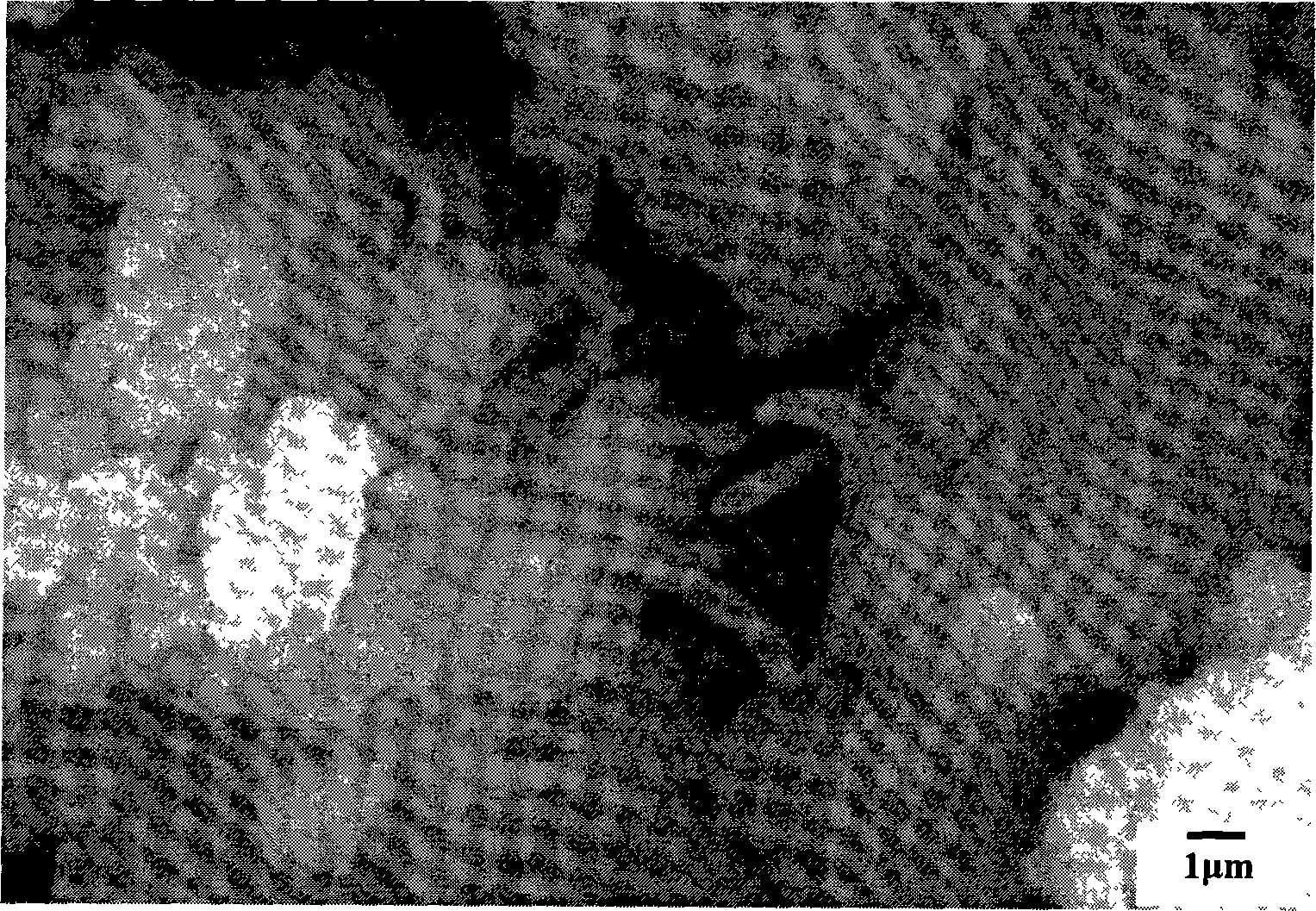Preparation of carbon nano-tube/cement self-enhancing damping composite material damping ratio testing method
A technology of damping composite materials and carbon nanotubes, which is applied in solid waste management, sustainable waste treatment, climate sustainability, etc., can solve problems such as uneven dispersion of carbon nanotubes, large data errors, and poor bonding ability, and achieve The test device is simple, low cost, and the effect of improving strength
- Summary
- Abstract
- Description
- Claims
- Application Information
AI Technical Summary
Problems solved by technology
Method used
Image
Examples
specific Embodiment approach 1
[0010] Specific Embodiment 1: The preparation of the carbon nanotube / cement self-reinforced damping composite material in this embodiment is realized according to the following steps: 1. The thickening emulsifier is dissolved in deionized water to prepare a continuous phase with a mass concentration of 0.1% to 15%. Solution; 2. Add carbon nanotube dispersant, carbon fiber dispersant, defoamer, acid oxidation-treated carbon nanotubes and oxidized carbon fibers into the continuous phase solution, magnetically stir and then sonicate to form a uniform carbon Nanotube dispersed phase mixed solution; 3. Add cement admixture, deionized water, superplasticizer and cement and polymer latex mixture to the carbon nanotube dispersed phase mixed solution in turn, and then add defoaming 4. Put the carbon nanotube mixed slurry into a test mold and pour it into a mold. After 24 hours, remove the mold and put it in a curing room with a relative humidity of 95±5% and a temperature of 22±3°C. Th...
specific Embodiment approach 2
[0012] Specific embodiment two: the difference between this embodiment and specific embodiment one is that the thickening emulsifier in step one is methyl cellulose, carboxymethyl cellulose, carboxyethyl cellulose, nonylphenol polyoxyethylene ether emulsifier , gum arabic, polyvinylpyrrolidone, polyvinyl alcohol or a mixture of several. Other steps and parameters are the same as those in Embodiment 1.
specific Embodiment approach 3
[0013] Embodiment 3: This embodiment differs from Embodiment 1 in that in step 1, the thickening emulsifier is dissolved in deionized water to prepare a continuous phase solution with a mass concentration of 0.5-5%. Other steps and parameters are the same as those in Embodiment 1.
PUM
| Property | Measurement | Unit |
|---|---|---|
| Outer diameter | aaaaa | aaaaa |
| Length | aaaaa | aaaaa |
| Diameter | aaaaa | aaaaa |
Abstract
Description
Claims
Application Information
 Login to View More
Login to View More - R&D
- Intellectual Property
- Life Sciences
- Materials
- Tech Scout
- Unparalleled Data Quality
- Higher Quality Content
- 60% Fewer Hallucinations
Browse by: Latest US Patents, China's latest patents, Technical Efficacy Thesaurus, Application Domain, Technology Topic, Popular Technical Reports.
© 2025 PatSnap. All rights reserved.Legal|Privacy policy|Modern Slavery Act Transparency Statement|Sitemap|About US| Contact US: help@patsnap.com

